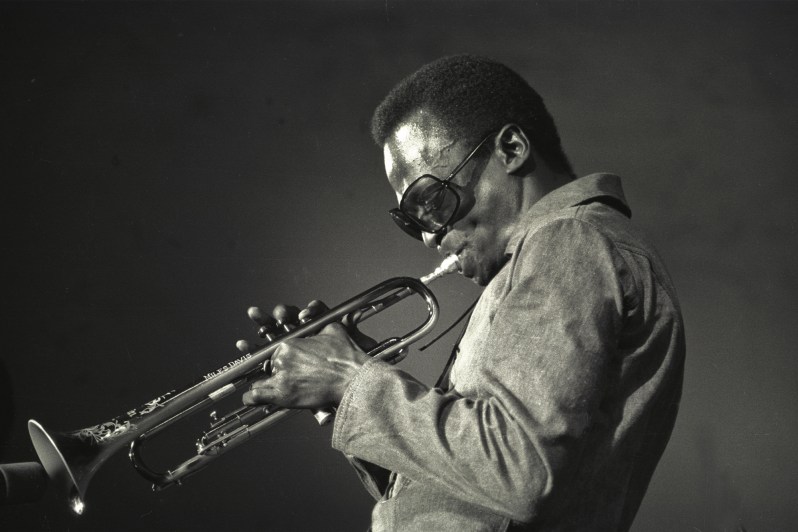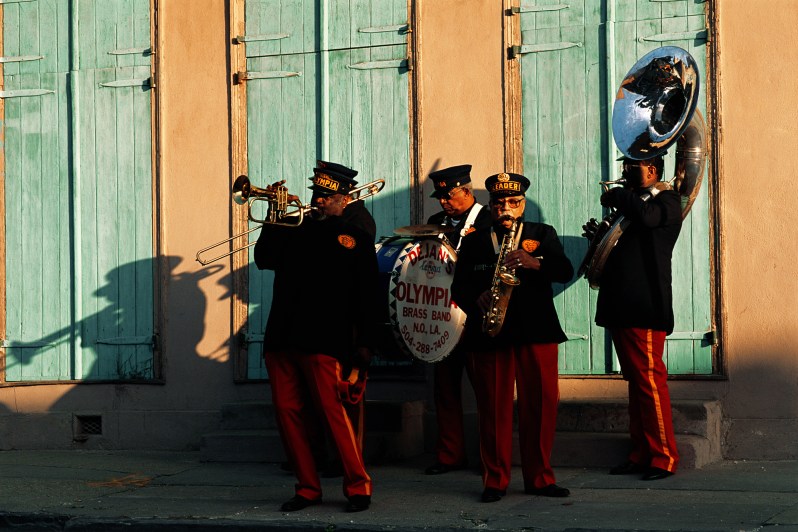Like a hard-to-pronounce wine or a karaoke machine at a quiet party, jazz can be intimidating. Our nation’s greatest contribution to music can come off as esoteric, with such far-fetched sounds and structure it functions like a foreign language.
Ah, but jazz is vast and there’s something there for everybody. Better still, it has many intoxicating entry points that serve like gateway drugs to grander, more exotic mental trips (minus the bad side effects).
A great way to get a feel for the genre is an introductory course from your local community college, many of which are available online. There’s also a wealth of knowledge on the web, ranging from posted literature from a long time ago to new content from prominent jazz writers and scholars like Whitney Balliett.
We also have a few tips that will have you spotting influences in classic compositions, falling deeply in love with syncopation, and wishing you could travel back to Chicago or New York, some 70 years ago.
Know the Masters

Miles Davis, John Coltrane, Herbie Hancock, Ella Fitzgerald, Billie Holiday. There are names you can’t overlook when it comes to jazz. For a crash course in the untamed beauty of the genre, there are a few legendary albums worth digesting. Kind of Blue by Miles Davis is considered by many to be the finest, a dizzyingly beautiful trumpet-centric portrait released in 1959. It remains a classic example of modal jazz, or the sub-genre that doesn’t necessarily adhere to a single musical tone and instead drifts in an artful, often moody fashion.
Another great record from the same year is Time Out from the Dave Brubeck Quartet. Its hit, “Take Five,” stands as one of the catchiest jazz-pop songs of all time. It represents a realm within jazz often dubbed west coast. As you might imagine, it’s influenced by the sun and waves and is decidedly more at ease than, say, hard-bop.
And in jazz, there’s hardly anything sexier than the sax. Coltrane was the instrument’s most dynamic player, and through magical albums like Blue Train, showed how the music could simultaneously be chaotic and far-fetched one minute, before falling back into a deep-swinging groove the next.
Break it up by Instrument
Every instrument lends a vital and often improvisational aspect to the larger jazz track. A great way to understand the incredible structure at play is through deconstruction. Sometimes, that’s easier said than done, especially when bands aren’t sounding off one at a time through a series of solos.
Up the volume and really zero-in on a specific tone — the brassy warmth of a saxophone, the twinkling drops of a piano, the shuffling of a drum set, the steady walk of a bass. Focus on them individually and in pairs, seeing how they interact. Finally, step fully back and take in the whole thing.
This is a valuable exercise in that it reminds the listener of just how tight good jazz acts are. Like a flock of birds or army of ants, there’s discipline and real call-and-response at work. The lead horn may venture off in one direction, only to have the organ player and percussionist follow suit, reshaping the nature of the song entirely. It can sound foreign to our pop-trained ears but if you simply embrace the tangents — even if you don’t fully comprehend them — you’ll learn to love just how brave and exploratory jazz is.
Get Interconnected

As you follow the arc of jazz, even just casually, you’ll begin to hear how influence begets influence. This happens in all forms of art but it’s arguably most pronounced here. One musician breaks the mold by playing in a new time signature or key change and suddenly there’s inspiration to tweak things further. In a genre with so many non-vocal sounds, you can still practically hear jazz say, “I see what you did there, now see where I take it.”
It’s one of the cooler galaxies in music because you can hear it morph so distinctly over time, from its roots in West African sounds, the blues, and European harmonies to the pizazz of New Orleans to bebop and ultimately the improvisational poetry of the modern era. Throughout, the genre has never gone stagnant, it doesn’t do ruts. Instead, it stays ahead of the game, mindful of ancient musical traditions but by no means convinced they shouldn’t be adapted.
Get Lost
Part of the fun of jazz is that it lacks formal parameters, for the most part. Approach it with a zest for travel. If you don’t like the free jazz and cosmic-bop of Sun Ra, go more grounded with somebody like Ella Fitzgerald or Esperanza Spalding. If a track feels too cacophonous, try it again during a different mood or time of day. If a specific instrument speaks to you, go down that wormhole and listen to its finest players. Same goes for a specific time period of jazz or record label. It’s a monumentally large genre
See Where it’s Headed
Jazz, like rock ‘n’ roll, is alive and well. The newest generation of players are taking the genre to the next level, which is sort of the whole point of the music style — for it to be in constant evolution. There are some fantastic acts to look out for. Kamasi Washington may be the most gifted of the newest class, a brilliant songsmith with a knack for lush and complex arrangements. His songs feel like opuses and you don’t just hear them, you feel them.
Colin Stetson is another to look out for, an avant-garde saxophonist from Michigan. He has collaborated with big names like Bon Iver and Arcade Fire and has written some intriguing movie scores, but his own work is the most innovative and jazzy. He’s even a circular breather, meaning he’s capable of playing for long, uninterrupted spells (think five or six minutes) without pausing for breath. While you’re streaming, look up Ethiopian multi-instrumentalist Hailu Mergia, The Bad Plus, and BADBADNOTGOOD.
Play an Instrument
If you don’t already, give it a go with an online lesson or two and your old guitar or pair of drum sticks. There are cool offerings right now that will allow you to tinker around sonically from the safety of home. And while it’ll kill some time, it’ll also reinforce the sheer skill on display in most good jazz recordings. Learning a Green Day song some afternoon is a very different task than replicating “A Night in Tunisia” by Dizzy Gillespie. Don’t try to climb that mountain, just stand back and savor the view.
Editors' Recommendations
- How Singer-Songwriter Vance Joy Escaped Lockdown with New Single ‘Missing Piece’
- A Quick Guide to Livestreaming for Beginners
- How to Limit Waste While Social Distancing
- A Beginner’s Guide to Pro Wrestling, From Suplexes to T-Shirt Sales
- How to Get Over a Fight


